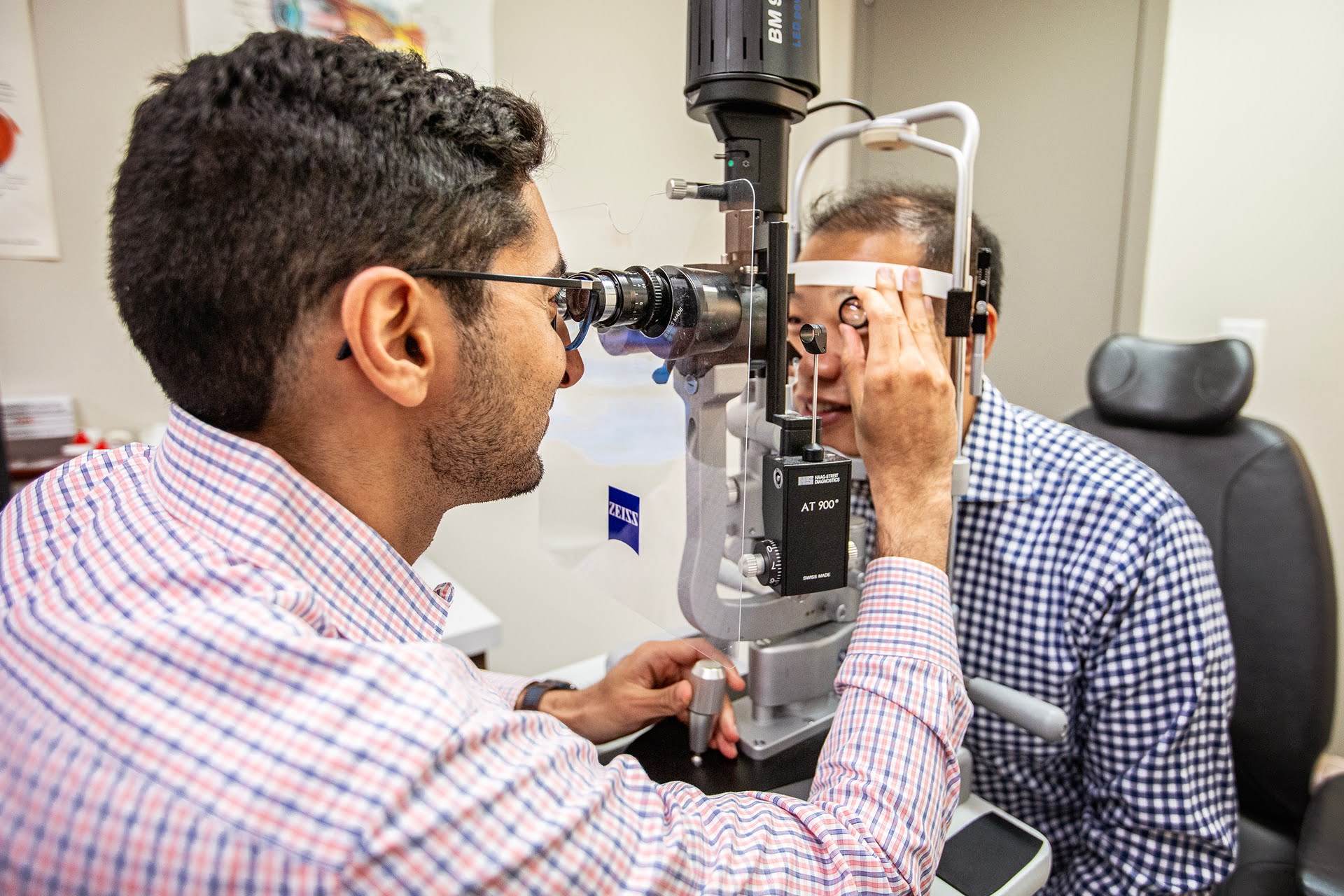
What is a Thyroid Eye Disease?
Thyroid eye disease is an autoimmune disease (i.e.: where your body attacks itself) which causes swelling of the tissues around and behind the eye. There are at least various theories to explain its cause and development. Thyroid eye disease usually, but not always, occurs in people with a history of thyroid problems, particularly Graves disease. Thyroid eye disease has not been consistently shown to be caused by radioactive iodine or thyroid surgery but there is concern that radioactive iodine can be a negative influence in some people. Interestingly, smoking definitely makes thyroid eye disease worse.
What are the effects of thyroid eye disease?
Thyroid eye disease has many effects. Most people, in the development of thyroid eye disease, will relate that their eyes are sore, gritty, burning and irritable. Generally, there is swelling of the eyelids and the tissues around the eye and some people develop double vision (diplopia). The swelling of the tissues is caused by inflammation of the eye muscles behind the eye, with some inflammation of the fat behind the eye. The inflammation causes swelling of the muscles and the fat and this causes the appearance of proptosis – bulging forward of the eyes. Occasionally, the swelling of the muscles is so severe that they squeeze the optic nerve deep behind the eye and produce loss of vision. Fortunately, this is uncommon and if caught early, usually responds to treatment
How is thyroid eye disease treated?
It can be possible to modify or reduce the progression of thyroid eye disease. The standard treatment for active, severe thyroid eye disease is high dose cortisone – this usually works but has a multitude of possible unwanted side effects particularly over longer-term. Orbital radiation to the tissues behind the eye can also be an effective way of settling down the inflammation and bringing the disease process under control. Steroid-sparing immunosuppressive agents are becoming more targeted and are playing an increasing role in decreasing inflammation, trying to minimize exposure to steroids. These agents have their own risks and are often administered under the care of a rheumatologist.
Once the disease has stabilized, surgical management of the tissues around the eye can be considered for rehabilitative purposes. During this time, eye drops and ointment are the mainstay of treatment.
What surgeries are done for thyroid eye disease?
Rehabilitative surgery for thyroid eye disease can include orbital decompression, strabismus surgery for straightening the eyes to remove double vision, and correction of the eyelids. The upper lid muscle may need to be dropped, and the lower lid may need to be raised. This is not done just for appearance of the eyes – but also to maximize comfort and improve the protection to the eyes. The goal is to have the eyelids repositioned to achieve a satisfactory lid position, and consequently, improved eye comfort and safety. Lastly, elective blepharoplasty to remove the baggy skin or fat from the upper or lower eyelid can be undertaken for remaining cosmetic concerns.
In summary, thyroid eye disease is a challenging disease with significant effect on patients’ quality of life. Thyroid eye disease requires a multidisciplinary team approach between ophthalmology, endocrinology, radiology, radiation oncology and rheumatology.
Explore More Conditions
We specialize in diagnosing and treating a variety of complex eye conditions that can affect both vision and appearance. From Orbital Disease and Thyroid Eye Disease to Lacrimal Disease and the management of Anophthalmic Socket, our expert care is tailored to restore function and improve quality of life. Explore the various conditions below to learn more about the causes, symptoms, and treatments available for these conditions, and how our team can support you on your journey to better eye health.
Lacrimal Disease (Tearing)
The nasolacrimal duct is the tear duct system that drains the normal tears away from the eye and into the sinuses. There is a need for constant balance– too many tears produce the annoying symptoms of blurred vision and a wet face; too few tears create the misery of dry eyes.
Anophthalmic Socket
Tragically, eyes are still lost to trauma, tumours, and severe ocular diseases. The role of enucleation (removal of an eye) and the reconstructive work of socket repair using implants are integral parts of our practice. We work in tandem with excellent ocularists in town who create custom prostheses.